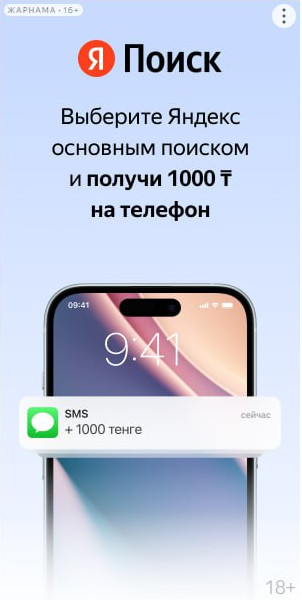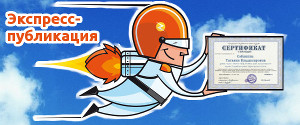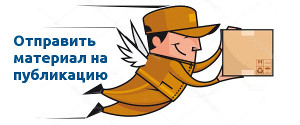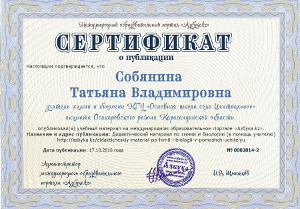Five-minute activities at the lesson of English language
Галинина Г.А. учитель английского языка
Средней школы № 8 г. Петропавловск

As a teacher of English I hope my students will take an active part in the classroom. It’s my duty to make classroom a lively and interesting place. How can I create such a classroom? My experience has taught me that
Warm-up activities are activities or games carried out at the beginning of each class to motivate students, so they can make good use of class time, because some students are afraid of speaking English or they are confused, so I try to involve them into the process of collaboration. In our daily life we are to play different parts. Immortal W. Shakespeare noticed that «The entire world’s a stage and all the men and women nearly players.» According to this statement I can allow students to improve variations or a continuation, developing exercise into a role play. I put something into my „magic box“ and ask the students to guess what is in it by using their five senses. Our dialogue is something like this:
Student: Is it flexible?
Teacher: Yes
Student: Can it to be eaten?
Teacher: Yes.
Student: Is it chocolate?
Teacher: No.
Student: Is it chewing gum?
Teacher: Yes.
The students questions were general, and I only answered „Yes“, or» no». Most students enjoyed the game and joined the
Although the students’ feedback confirmed that warm- up activities are a creative teaching tool, we need to adopt appropriate games. If the games are too difficult, the students cannot do them, but if the games are too easy, the students do not improve their English and may lose interest. Therefore it is always better to link each short activity to what the students are studying.
Doing traditional exercises I see that it is intense and monotonous kind of learning. We use words to communicate with people, but we also use body language- particularly gestures and facial expressions to help the students to learn language better. In keeping to the goal of raising students’ awareness of learning language we should distract students’ attention from linguistic and grammar forms of expressions and I want them to be able to explain their personal opinion about picture, video, or a story or any other real thing.
The following are some activities I have used successfully in my teaching.
Memorizing activity
When I teach them memorizing, I require my students to listen to attentively every student’s reading one by one in any order, and I clean one of the words on the board until all the words will be disappeared. I suggest learning the poem about Kazakhstan in the
- This Land is your land
And this land is very big land
From Petropavlovsk to Almaty
From white sand desert
To the big green valley
This land is made for you
This land is made for me
From the southern mountains
To the central steppe land
From the Caspian sea
To the Lake Balkhash
This land is made for you and me.
These next poems are acceptable for the
- The children are small and know nothing at all
When they first go to a primary school
The more they grow the more they know
6-th ,7-th ,8-th grades are middle school
The last years are the best
When they learn all the rest
9-th-12-th grades are high school
And according to an ecological theme I am used to teaching this verse:
In order to find the solution
To the problem of pollution
We should all think about
The things we could live without
Similes activity
The assignment is to choose and write down the traditional English similes from a random list of words on a blackboard and then ask students to create their own phrases (
- Ham hot chips salad burger
Strawberry cream dog soft candy drink
Potato fries cotton Greek fruit shake
Chips jam candy butter milk peanut
The key is peanut butter, soft drinks, fruit salad, cotton candy, milk shake, potato chips, fruit salad, strawberry jam, hamburger, hot dog, candy cotton.
Plot imagination:
When I give some imaginative warm-up activities I’d like my students imagine what they would see, hear, smell, feel and think to reflect their feelings.
Imaginative descriptions:
Preparations: Take any two pictures large enough for the class to see clearly.
Procedure: Hold up to pictures chosen at random and ask the students to suppose possible relationship between them. Encourage imagination, even ridiculous ideas. For example: a picture of a car and a picture of a packet of cigarettes:
Student A: They are both dangerous to other people, not only to the driver or to the smoker.
Student B: They both give a lot of taxes to the government.
Student C: The driver of that car wants to stop smoking so that he can pay for the car.
Student D: I don’t like it when people smoke in a car.
Variations: I can ask the students to imagine a connection between two items: picture/picture, picture/text
The text can be short or long, written or spoken.
Teaching the structure «If I had a million dollars» I can practice of conditionals and imaginative situations for
I ask the students to imagine that a million dollars/ or an equally large sum in the local currency/ is to be won by the person who can think of the most original thing to do with the money. Then I listen to their ideas and decide who has won.
Picture talking: Sometimes the teacher needs to provide visuals for the class. I show the picture one or two minutes for one group and then their opponents looking at this picture ask the first group some questions in details about this picture.
The students are interested in doing this activity when I teach them the theme «Memory» in the
Alternative ending: Using «alternative endings» as a
Saying / proverb questions or questions about a statement. When I use this kind of warm- up activity I write the first part of a saying, like «The moon is made of green cheese." The students try to see how many questions they can ask about it.
Possible questions:
- Has the moon always been made of green cheese?
Is the cheese light or dark green?
Is the cheese hard or soft?
Is the moon all made of green cheese or only part of it?
Why is the moon made of green cheese?
How was it made?
If there is a time the students try to think of answers to some or all of the questions.
Another variation of the statement «Genius is one percent inspiration and…», and leave the last part for the students to complete like «
- What do you think this statement means?
What could you substitute for «inspiration» and «perspiration «?
How could you paraphrase this statement?
How could you translate this sentence?
Give Russ ion equivalents.
This activity teachers students some sayings and proverbs, thereby increasing the students’ knowledge of the culture. I would say in conclusion that these
- 23127 просмотров


.webp)






.webp)
